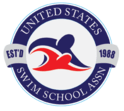As a parent, odds are good that your number one goal with your children is to keep them safe. Safety is a primary concern, especially around water, and it’s important that it’s taken seriously. Unfortunately, many well-meaning parents and caregivers mistakenly think that water safety apparel is useful for kids when learning to swim. Here’s a look at what to avoid, and why, so you can prepare your child for optimal water safety.
Floaties and Water Wings are Dangerous
It’s pretty common for parents to stick their children in floaties or water wings when they’re interested in swimming, but can’t do much in the water on their own yet. These types of devices are often mistakenly viewed as swim safety devices. They help the parent feel a little more comfortable with their child being in the water, and they give the child a false sense of security. Most kids love to wear these items, as they make them feel independent and bring them to the surface when they jump in the water.
The problem with this is that these children aren’t independent in the water so they aren’t learning what really would happen if they went into the water on their own. Also, wearing floaties or water wings puts a young person in a vertical position, which is more taxing on the body and isn’t the proper position for swimming. These products teach kids to remain upright in the water (the position that will make them sink to the bottom faster than any other) and that they can maneuver through the pool on their own. Both of these are downright dangerous.
If you’ve been using floaties or water wings, it’s time to get rid of them completely. Your children need to learn to swim in a horizontal position, and learn how to roll over and float on their backs (the safest and least tiring position if they ever have to wait for help). Without props like floaties or water wings, your kids will learn the reality of how their bodies respond to water. If they jump off of a step, they will be submerged underwater (and not artificially brought back to the surface). They will need to learn how to bring themselves to the surface instead, and use actual swim skills to keep their heads out of the water. These are extremely important elements of safety and swimming aptitude.
Buoyant Turtles and Pool Noodles
At Hubbard Family Swim School, we use buoyant kickboards in the shape of turtles and pool noodles in order to help teach children balance and swim skills in the water. If you’re attending classes and have been taught how to use these instruments under the watchful eye of a trained instructor, you can feel free to replicate this learning at home with the same props. But kickboards and noodles should never be used by a child on their own, and should always mirror the way in which our instructors use them. When relied upon properly, these can be useful tools to further swim skills.
What About Boats?
The only type of water safety apparel that we recommend is a kids life jacket when on a boat or ski doo. If a child is on the deck of a boat, they should remain in a life jacket at all times. Be sure your little one has been properly fitted for the right size and type of life jacket, and that you’ve adjusted the straps to fit them as it should. Kids’ life jackets are meant to be a last resort as a swim safety device in the event a child ends up overboard or the boat ends up sinking, but they should never be a tool used for a child when learning to swim. Boats are really the only appropriate place for kids’ life jackets, as they also put kids in a mostly vertical position and do not aid in teaching swim skills.
If you’ve used floaties or water wings with your child in the past, don’t worry. You can start fresh today by throwing them away and helping your little ones to learn the real cause and effect of their body’s movements in the water. If they aren’t yet enrolled in swim classes, it’s important to start them soon to help counteract the misleading relationship they might have had with water previously, as a result of relying on floaties or water wings.
And if they are in swim classes, that’s great! Continue their classes and only use the same props (like kickboards and pool noodles) that your swim instructor uses in the same way they’re used in class. Otherwise, swim safety devices and water safety apparel should be kept away from your home pool, and kids’ life jackets should be reserved for boats. As always, the best way to keep your child safe around water is vigilant adult supervision and regular swim classes.



